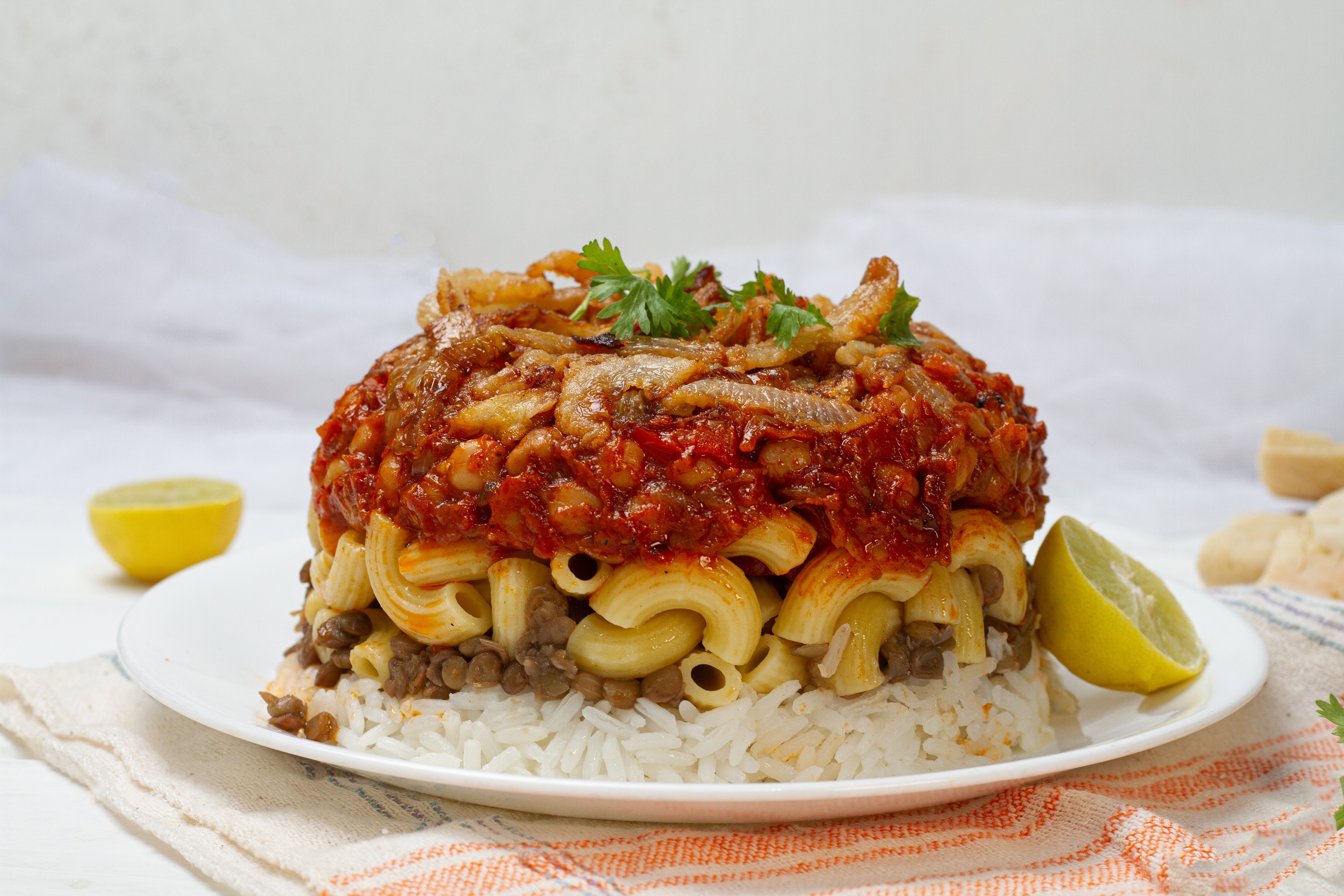Koshari: The Perfect Comfort Food
Koshari is a traditional Egyptian dish that has become a symbol of the country's culture. It is a mixture of rice, pasta, lentils, and chickpeas, which is usually served with a tomato sauce and fried onions. Koshari is a very popular dish in Egypt, and can be found in many restaurants and street stalls.
The origin of koshari is unclear, but it is believed to have originated in the mid-19th century, during the British occupation of Egypt. At that time, many Indian and British immigrants moved to Egypt, and brought their own cuisines with them. Koshari is a fusion of these two styles of cooking, and is believed to have originated in the poor neighborhoods of Cairo, where Indian and British immigrants worked and lived together.
Koshari is a very affordable dish, and is a good source of protein, carbohydrates, and fiber. This made it a popular dish among students and workers, and it is also a popular dish for religious holidays.
Koshari is a very versatile dish, and can be served as breakfast, lunch, or dinner. Koshari is a delicious and nutritious dish, and is a good option for those looking for an affordable and healthy meal.
Nutritional benefits of koshari
Koshari is a very nutritious dish, and is a good source of protein, carbohydrates, fiber, vitamins, and minerals. Rice, pasta, lentils, and chickpeas are all nutrient-rich foods, and when combined, they form a very complete meal.
Koshari is a good source of protein, which is necessary for growth and muscle development. Koshari is also a good source of carbohydrates, which are the body's main source of energy. Lentils and chickpeas are a good source of fiber, which is important for digestive health. Koshari is also a good source of vitamins and minerals, including iron, zinc, magnesium, and phosphorus.
Koshari is a very healthy dish, and is a good option for those looking for a balanced diet.
Variations of koshari
Koshari is a very versatile dish, and can be prepared in different ways. The traditional koshari recipe includes rice, pasta, lentils, and chickpeas, but other ingredients can be added, such as meat, poultry, fish, or vegetables. Koshari can also be served with different sauces, such as tomato sauce, tahini sauce, or yogurt sauce.
Koshari is a very versatile dish, and can be adapted to different tastes. It is a delicious and nutritious dish, and is a good option for those looking for a balanced diet.
Anatomy of Koshari
Koshari consists of a mixture of rice, lentils, macaroni, chickpeas, and fried onions. It is usually served in a bowl without mixing, in the style of a Buddha bowl. However, it can also be served by placing the layers in succession inside a bowl.
The layers of Koshari
-
Rice: Rice is the base of koshari. Basmati rice is usually used, which is a long-grain and aromatic rice.
-
Lentils: Lentils are an important source of protein and fiber in koshari. Red lentils are usually used, which are soft and easy to digest.
-
Macaroni: Macaroni is a crispy and fun addition to koshari. Elbow macaroni is usually used, which is a type of short, curved pasta.
-
Chickpeas: Chickpeas are another important source of protein and fiber in koshari. Cooked chickpeas are usually used, which are soft and creamy.
-
Tomato sauce: Tomato sauce is the sauce that binds all the ingredients of koshari. It is usually made with fresh tomatoes, onions, garlic, spices, and olive oil.
-
Fried onions: Fried onions are a crispy and delicious touch to koshari. They are usually fried in olive oil until golden brown and crispy.
How to serve Koshari
Koshari can be served in several ways. The most traditional way is to serve it in a bowl without mixing, in the style of a Buddha bowl. This allows each diner to mix the ingredients to their liking. Another way to serve koshari is by placing the layers in succession inside a bowl. This creates a more attractive presentation, but it is also more difficult to mix the ingredients.







Leave a comment
This site is protected by hCaptcha and the hCaptcha Privacy Policy and Terms of Service apply.